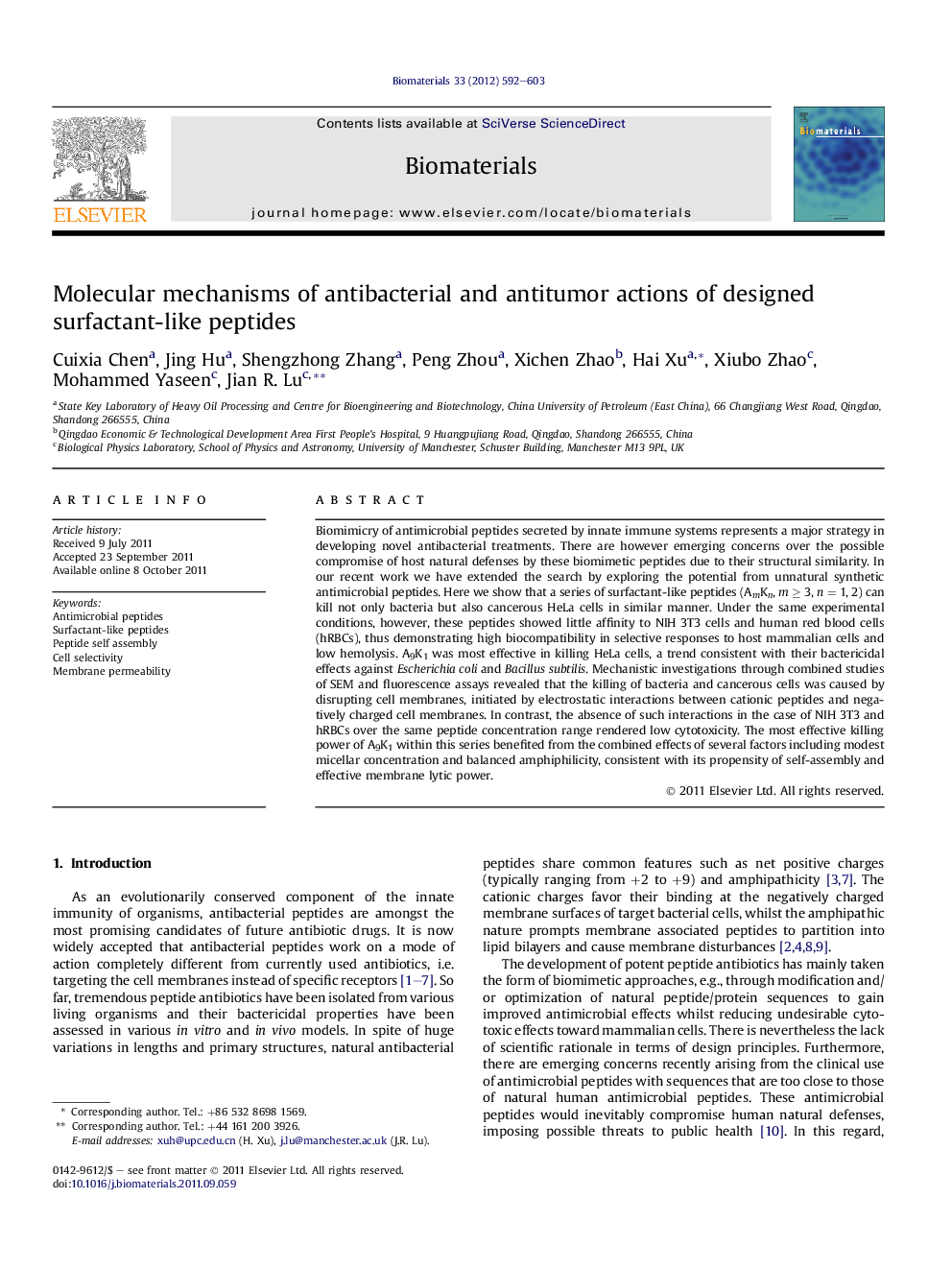| Article ID | Journal | Published Year | Pages | File Type |
|---|---|---|---|---|
| 7624 | Biomaterials | 2012 | 12 Pages |
Biomimicry of antimicrobial peptides secreted by innate immune systems represents a major strategy in developing novel antibacterial treatments. There are however emerging concerns over the possible compromise of host natural defenses by these biomimetic peptides due to their structural similarity. In our recent work we have extended the search by exploring the potential from unnatural synthetic antimicrobial peptides. Here we show that a series of surfactant-like peptides (AmKn, m ≥ 3, n = 1, 2) can kill not only bacteria but also cancerous HeLa cells in similar manner. Under the same experimental conditions, however, these peptides showed little affinity to NIH 3T3 cells and human red blood cells (hRBCs), thus demonstrating high biocompatibility in selective responses to host mammalian cells and low hemolysis. A9K1 was most effective in killing HeLa cells, a trend consistent with their bactericidal effects against Escherichia coli and Bacillus subtilis. Mechanistic investigations through combined studies of SEM and fluorescence assays revealed that the killing of bacteria and cancerous cells was caused by disrupting cell membranes, initiated by electrostatic interactions between cationic peptides and negatively charged cell membranes. In contrast, the absence of such interactions in the case of NIH 3T3 and hRBCs over the same peptide concentration range rendered low cytotoxicity. The most effective killing power of A9K1 within this series benefited from the combined effects of several factors including modest micellar concentration and balanced amphiphilicity, consistent with its propensity of self-assembly and effective membrane lytic power.
